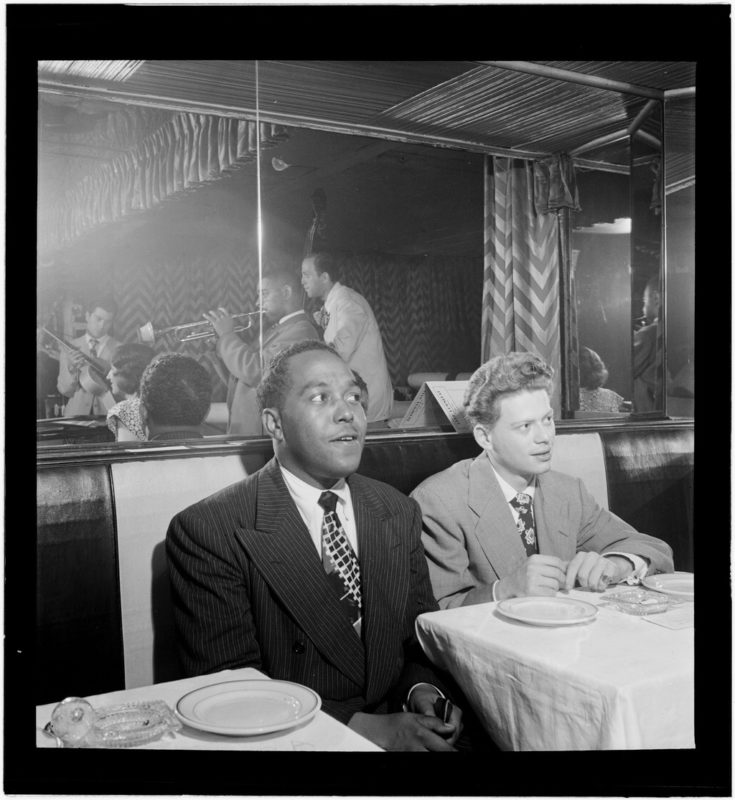7. Charlie Parker and Dizzy Gillespie
 Charlie Parker (left) sits next to Red Rodney (right) as they watch Dizzy Gillespie (in mirror) perform at Downbeat, a Philadelphia progressive jazz club, in 1947. Image from the Library of Congress, photo taken by William Gottlieb via Wikimedia Commons.
Charlie Parker (left) sits next to Red Rodney (right) as they watch Dizzy Gillespie (in mirror) perform at Downbeat, a Philadelphia progressive jazz club, in 1947. Image from the Library of Congress, photo taken by William Gottlieb via Wikimedia Commons.
Another beat generation duo, Charlie Parker and trumpeter Dizzy Gillespie, were among some of the New York City jazz scene’s most avid collaborations. Along with Miles Davis, they headed the New York City modern jazz movement, coined “Bebop,” that came to characterize the overall sound of the Beatniks and change the face of jazz itself. Recording many an album together, both live and in the studio, Parker and Gillespie quickly formed both a personal and musical bond. The New York Times obituary of Gillespie, written just after musician’s death in 1993, even recalls that Gillespie would refer to Parker as “the other side of my heartbeat,” along with crediting Parker as a sound-of-bebop innovator.
In his article “Dizzy Atmosphere”: The challenge of Bebop,” Dr. Eric Porter confirms that Parker and Gillespie were chief pioneers among the movement, and also speaks to Bebop as the musical manifestation of the Beatnik persona. He writes, “Not only did he development of the music itself reflect the forward-looking, worldly perspectives of many of its practitioners, but their public responses to the idea of bebop also spoke of the refusal of the artistic and social boundaries that inspired their music.
Although Parker and Gillespie met initially in Kansas City, it wasn’t long before they made their way to New York City, where they put that Bebop ideology to work. Minton’s Playhouse, located at 118th Street in Harlem, is broadly accepted as one of Bebop’s main birth places. Porter says Minton’s Playhouse was the “site of lengthy jam sessions where many of the musicians instrumental to the consolidation of bebop developed their techniques and musical ideas.” One such jam session includes Parker and Gillespie’s 1941 track “Kerouac,” inspired by the Beatnik leader himself.





